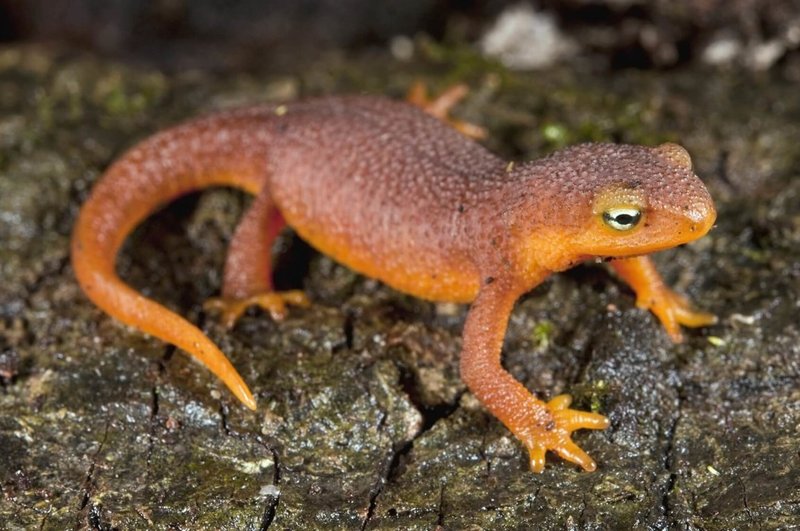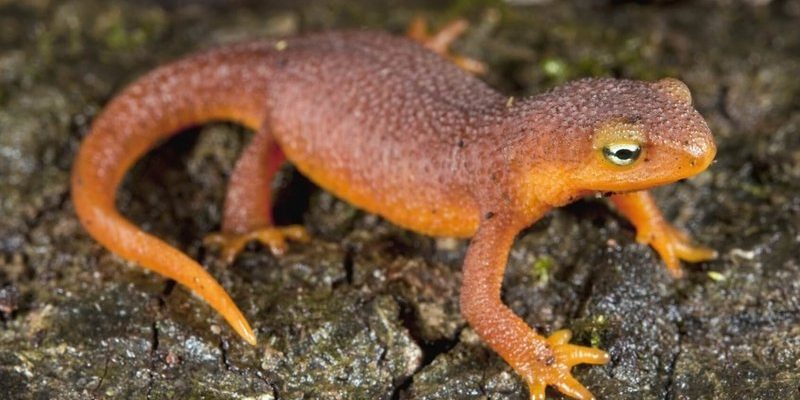
Newts are more than just your typical pet store amphibians; they’re found in many parts of the world, from the misty forests of Europe to the lush wetlands of Asia and even the rugged terrains of North America. Each region brings unique species with distinct characteristics, making newts a treasure trove of biodiversity. So, grab your coffee, and let’s dive into the different places where newts can be found across the globe!
1. North America: Home of the Eastern Newt
In North America, especially in the eastern regions, you’ll find the Eastern Newt (Notophthalmus viridescens). These little guys thrive in areas like woodlands, ponds, and marshes. They have a vibrant greenish-yellow color during their juvenile stage, which helps them blend into their surroundings, making it harder for predators to spot them.
Newts in this region go through a fascinating lifecycle. They begin as eggs laid in water, hatch into larvae, and then metamorphose into adults. Eastern Newts are known for their bright coloration, especially during the terrestrial phase when they take on a more muted look to camouflage against the forest floor.
You might be wondering, how do these creatures survive in a variety of habitats? Their adaptability allows them to thrive in both aquatic and terrestrial environments. During the warmer months, they’re often found in ponds or swamps, while in the fall, they may venture onto land to find shelter.
2. Europe: A Rich Habitat for Newts
Across the Atlantic, Europe hosts several newt species, including the Common Newt (Lissotriton vulgaris) and the Palmate Newt (Lissotriton helveticus). These newts are prevalent in garden ponds, marshes, and even ditches. The Common Newt is particularly interesting because it can be found in both calm and fast-moving waters.
In Europe, newts often undergo a transformation based on the seasons. During spring, males develop vibrant colors to attract females, becoming a dazzling sight in clear ponds. These newts are not only beautiful but also play a crucial role in their ecosystems. They help control insect populations and serve as a food source for birds and other wildlife.
Newts in this region face challenges like habitat destruction, but many conservation efforts are underway to protect their environments. Local wildlife charities often work to restore ponds and marshlands, ensuring these amazing amphibians continue to thrive.
3. Asia: Diverse Species in Varied Climates
Asia boasts a remarkable variety of newt species, from the Japanese Newt (Cynops pyrrhogaster) to the Chinese Fire-Bellied Newt (Cynops orientalis). These newts are typically found in subtropical and tropical regions, making them a bit different from their North American and European relatives.
For instance, the Japanese Newt is known for its ability to inhabit rice paddies and slow-moving streams. They tend to congregate in breeding ponds during the wet season, laying eggs among the vegetation. The Chinese Fire-Bellied Newt, on the other hand, is famous for its bright orange or red belly, which serves as a warning to potential predators about its toxicity.
The diversity in climate across Asia allows newts to adapt to various environments, from humid jungles to mountainous regions. However, they still face threats from pollution and habitat loss due to urban development, highlighting the need for conservation efforts in these areas.
4. Africa: A Hidden Gem of Newts
You might not associate Africa with newts, but the continent does have its share. The African Clawed Newt (Xenopus laevis) is a notable species found primarily in Algeria and Morocco. These newts are unique because they have adapted to life in water, often found in ponds and swamps.
Their distinctive feature is their claws, which help them move through the underwater vegetation. The African Clawed Newt is also known for its intriguing reproductive behavior. Unlike many other newts, they lay their eggs in water, and the larvae develop quickly, which is essential for survival in their often harsh habitats.
Despite their fascinating adaptations, these newts are not well-known and face conservation challenges. Habitat destruction and pollution threaten their populations, underscoring the importance of awareness and protection for these remarkable creatures.
5. Australia: Where Newts Are Rarer
While newts are not as prevalent in Australia as in other regions, the country is home to some similar amphibians. The Australian Newt (Neochanna spp.) might not be your average newt, but they share many similarities with true newts from other parts of the world. Found mainly in freshwater systems, these amphibians are essential for maintaining the balance in their ecosystems.
In Australia, amphibians face significant pressures from climate change and habitat loss. Conservationists are working hard to protect their unique biodiversity, including the species that resemble newts. The attention to their ecosystems also helps promote awareness about the importance of amphibians in our environment.
6. Conservation Efforts: Protecting Newts Worldwide
As we’ve seen, newts inhabit many regions around the globe, but they’re not without their challenges. Conservation efforts are essential for preserving these species and their habitats. Organizations and researchers work tirelessly to monitor populations, restore habitats, and educate the public about the importance of amphibians.
In many areas, creating protected zones around breeding sites is critical. This helps to ensure that newts have safe places to lay eggs and grow without large human impact. Community involvement, such as local pond restoration projects, also plays a huge role in conservation.
You might be surprised to learn that even small actions can make a difference. By creating awareness and encouraging local conservation efforts, each of us can contribute to the well-being of these remarkable creatures.
7. A World of Newts Awaits
Newts are more than just fascinating amphibians; they are vital components of ecosystems across the globe. By understanding their habitats and the challenges they face, we can better appreciate these intriguing creatures. Whether it’s the colorful Eastern Newts of North America or the unique Japanese Newts of Asia, each species contributes to the rich tapestry of life on Earth.
So, the next time you think of newts, remember that they’re not just found in your local pet store; they are part of a larger story that spans continents and ecosystems. Each region offers a unique glimpse into their lives, showcasing their adaptability and importance in nature.
As we continue to learn about newts and their habitats, we can engage in practices that support their survival. Whether through conservation efforts or simply appreciating their beauty, there’s a world of newts waiting just outside our door.

